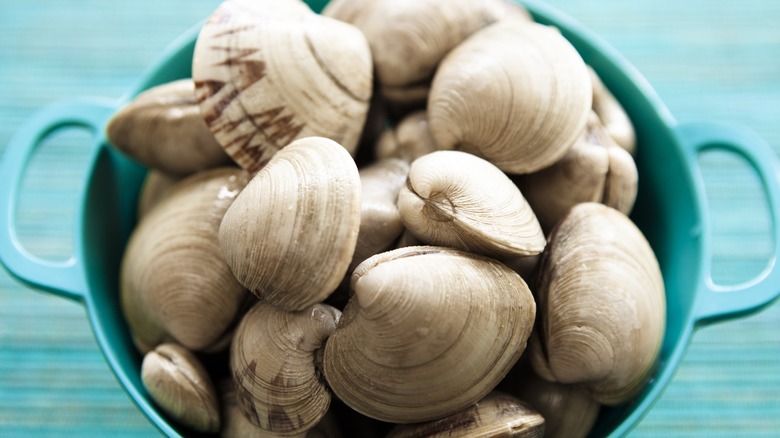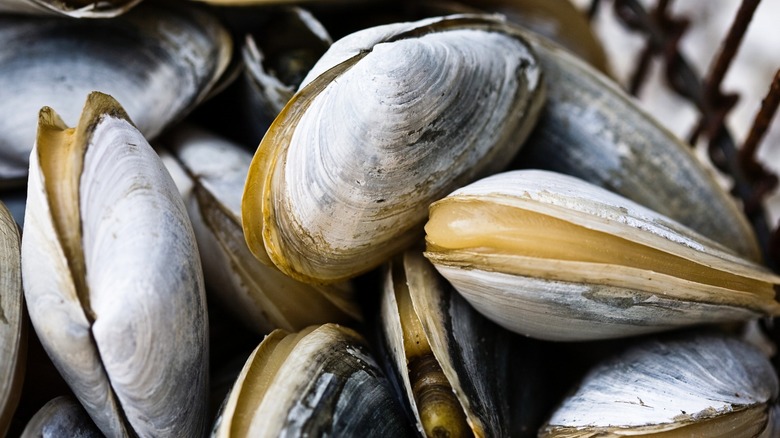How To Pick The Freshest Clams At The Fish Market
From West Coast, East Coast, steamers, and cockles to quahogs, cherrystones, and littlenecks, you have enough to keep track of during your hunt to find the right type of clam for your dish. Freshness should be a given, but detecting visible signs of vitality is one of the most important things to look for when buying clams at the fish market. Fresh clams are naturally high in essential nutrients such as vitamins C and B-12, iron, selenium, protein, zinc, and omega-3 fatty acids, but all of these impressive health benefits go out the window if the meat is no longer in a high-quality state. It's up to savvy home cooks to spot the difference.
For starters, give those clams a good whiff. If they smell briny, like they've been newly swiped out of the ocean, that's a good sign. "Briny" is a distinctly different aroma from "fishy," which can indicate spoilage. To prevent eager bacteria from spawning, clams have to stay alive right until they're cooked. As you browse the fish market, keep an eye out for breathable packaging like netting or perforated bags to make sure those clams aren't being smothered. Also notable, freshwater will kill a live clam, so look out for a barrier of some sort separating the clams from the ice cubes beneath.
Use your senses and it'll all make sense
As you give those bad boys a visual inspection, look for closed shells. An open shell is one of the most easily identifiable indicators of a clam that has lost its freshness. In the industry, a "clammed up" mollusk is exhibiting "shell shock," which is a desirable thing. Once it is harvested from its water habitat, a live, healthy clam is going to keep its bivalves closed tight as it enters an unfamiliar environment. The only exception is, after a prolonged period of clamming up, sometimes clams will slightly open their shells to breathe and feed. If you notice that clams have opened, tap the top shell; if it doesn't easily shut, that might be a sign that the clam has died.
In addition to being closed, those clam shells should be unbroken and moist. A little dirt doesn't hurt and can always be washed off later, but the key is that we're looking for signs of life. It's also totally safe to buy pre-shucked clams but be sure to look inside the container and check for clear liquid and plump, firm, fresh-smelling meat. A creamy white to light tan color is a green flag (and ironically, any visible green hue is a red flag). When in doubt, it's always a good idea to direct any questions you might be having to your fishmonger. If you're visiting a reputable purveyor, they'll be able to tell you exactly where the clams were harvested from and when.

